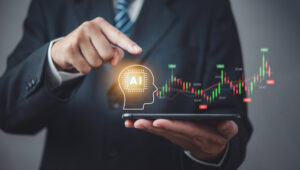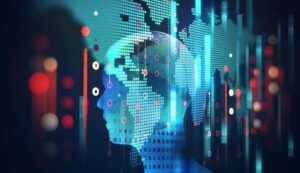In the rapidly evolving world of digital marketing, the AI ad image generator is making waves. These innovative tools are transforming the way advertisers approach creativity, promising efficiencies and new possibilities in ad design. For digital creators and marketers, understanding the potential of these tools is crucial.

Understanding AI Ad Image Generators
An AI ad image generator utilizes artificial intelligence to create visually compelling images tailored for advertising. These tools analyze vast amounts of data to produce designs that resonate with target audiences, enhancing the effectiveness of advertising campaigns.
How Do AI Ad Image Generators Work?
AI ad image generators work by leveraging machine learning algorithms to interpret and process data inputs. They can create images based on specific parameters set by the user, ensuring the generated content aligns with the brand’s identity and campaign goals.
The Role of Big Data
Big data plays a significant role in the functionality of AI ad image generators. By analyzing consumer behavior, market trends, and visual preferences, these tools can produce more targeted and engaging images.
Benefits of Using AI Ad Image Generators
The benefits of using an AI ad image generator are numerous. They offer speed, efficiency, and a level of creativity that can be difficult to achieve manually. Additionally, they can reduce costs associated with hiring graphic designers or photographers.
Time Efficiency
One of the most significant advantages is time efficiency. AI tools can create images in a fraction of the time it takes a human designer, allowing for faster campaign turnaround times.
Cost Reduction
By automating the image creation process, businesses can save on costs associated with hiring professional designers, thereby reallocating resources to other areas of their marketing strategy.
Challenges and Considerations
Despite the advantages, there are challenges to consider when using an AI ad image generator. These tools may lack the nuanced understanding of human emotions and cultural contexts that a human designer possesses.
Quality Control
Ensuring the quality of AI-generated images can be challenging. Human oversight is essential to ensure that the final product aligns with the brand’s standards and values.
Ethical Concerns
There are ethical considerations, such as the potential for AI to perpetuate biases present in the data it learns from. It’s crucial to address these issues to maintain ethical standards in advertising.
Future of AI in Advertising
The future of AI in advertising is promising. With ongoing advancements in technology, AI ad image generators will become more sophisticated, offering even greater capabilities and customization options.
Integration with Other Technologies
AI ad image generators will likely integrate with other technologies, such as virtual reality and augmented reality, to create immersive advertising experiences.
Conclusion
The AI ad image generator represents a significant shift in how ads are created and deployed. For digital creators, staying informed about these tools and their capabilities is essential for remaining competitive in the advertising landscape.
Further Reading and Resources
For more insights into the role of AI in modern advertising, visit Storycat Creative. Additionally, explore how AI is transforming video content by reading our articles on Convert PowerPoint to Video and AI in Video Personalization.

FAQs
What is an AI ad image generator?
An AI ad image generator is a tool that uses artificial intelligence to create images for advertising purposes, enhancing creativity and efficiency in ad design.
How can AI ad image generators benefit advertisers?
These tools offer time efficiency, cost savings, and the ability to produce highly targeted and engaging images that align with campaign goals.
Are there any ethical concerns with using AI in advertising?
Yes, ethical concerns include the potential for AI to perpetuate biases and the need for human oversight to ensure quality and ethical standards are maintained.







